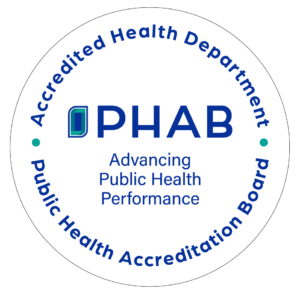Building Evacuation Plan
Safety of personnel during a disaster is of utmost importance. For COOP planning, the development of a building evacuation plan is essential. It should include: (Refer to Document 3 for further instructions)
- A Building Alert System
- Evacuation Routes and Exits
- Emergency Call-in Number (Worksheet 33)
- Emergency Response Team
- Employee Contact List
- Designated Assembly Area (Worksheet 34)
- Shelter-in-Place
COOP Execution
A COOP can be activated in part or in whole depending on the threat. An effective COOP will outline an executive decision process for the quick and accurate assessment of the situation and determination of the best course of action.
Class/Level of Emergency and Impact on Organization
Level I – Disruption of up to 12 hours, no COOP activation required
Level II – Disruption of 12-72 hours, limited COOP activation
Level III – Disruption of 1 or 2 essential functions, up to 3 days; some personnel may move to alternate site; >1 week
Level IV – Disruption of 1 or 2 essential functions, 3-14 days; may require activation of orders of succession; some personnel may move to alternate site; <1 week
Level V – Disruption to the entire organization lasting 14 days; requires activation of orders of succession; requires movement of personnel to alternate site
COOP implementation is divided into three phases:
1. Activation and Relocation
This is the initial 12-hour period following activities of the COOP plan. The business activates plans, procedures, and schedules to transfer essential functions, personnel, records, and equipment to the alternate facility. Appropriate offices and agencies are notified of COOP activation.
Activation – Must be prepared to activate COOP plans for all emergencies, regardless of warning period or during duty and non-duty hours.
COOP Team Deployment – Written procedures to guide the deployment process can reduce stress and ensure important concerns are not overlooked during the transition.
Relocation – The actual movement of essential functions, personnel, records, and equipment to the alternate operating facility.
2. Alternate Operating Facility Operations
The period from 12 hours after activation up to 14 days. Essential services are conducted from an alternate facility.
Written procedures include:
- Minimum standards for communication and direction and control to be maintained until alternate facility is operational.
- Activation of plans, procedures, and schedules to transfer activities, personnel, records, and equipment.
- Securing the primary facility and non-movable equipment and records.
Common Issues:
- Execution of mission-essential functions
- Assignment of responsibilities to key staff
- Augmentation of staff if inadequate
- Accountability for staff, including non-essential personnel
- Development of plans and schedules for reconstitution
Other Concerns:
- Rapid recovery is ensured if personnel have Go-Kits.
- Alternate facility should have a reception area and in processing procedures for deployed personnel.
- Personnel must know where to go to check in and receive assignments.
- Accountability of deployed and non-deployed personnel to ensure safety.
- See Worksheet 35.
3. Reconstitution
The process by which personnel resume normal operations from the original or replacement primary facility. It is conducted after the emergency or disruption ceases and is unlikely to resume.
Step 1: Within 24 hours of an emergency relocation, organizations should initiate and coordinate operations to salvage, restore, and recover buildings. This is done after local authorities say it is safe.
Step 2: Coordinate and pre-plan options for reconstitution of an organization regardless of the level of disruption causing implementation of its COOP Plan.
Step 3: Outline procedure necessary to effect a smooth transition from a relocation site to a new or restored facility.
Implementation of the Reconstitution plan will mean the actual transfer of materials, personnel, supplies, and equipment to the original facility, a new permanent facility, or a temporary facility. It should be orderly. (See Worksheet 36)
Reconstitution Manager
Coordinates and oversees the reconstitution process and develops the reconstitution plan. Should create a Reconstitution Team to aid with:
- Developing space allocation and facility requirements.
- Coordinating with appropriate organization to obtain office space for reconstitution if building is not habitable.
- Develop a time-phased plan, listing functions and projects in order of priority for resuming normal operations.
- Develop procedures, as necessary, for restructuring staff.
- Ensure the building is structurally safe and that it meets all local occupancy regulations.
Other possible roles:
- Damage Assessment and Reconstruction Team – Controls and directs the facilities recovery process.
- Crisis Management Team – Controls and directs the COOP recovery process.


